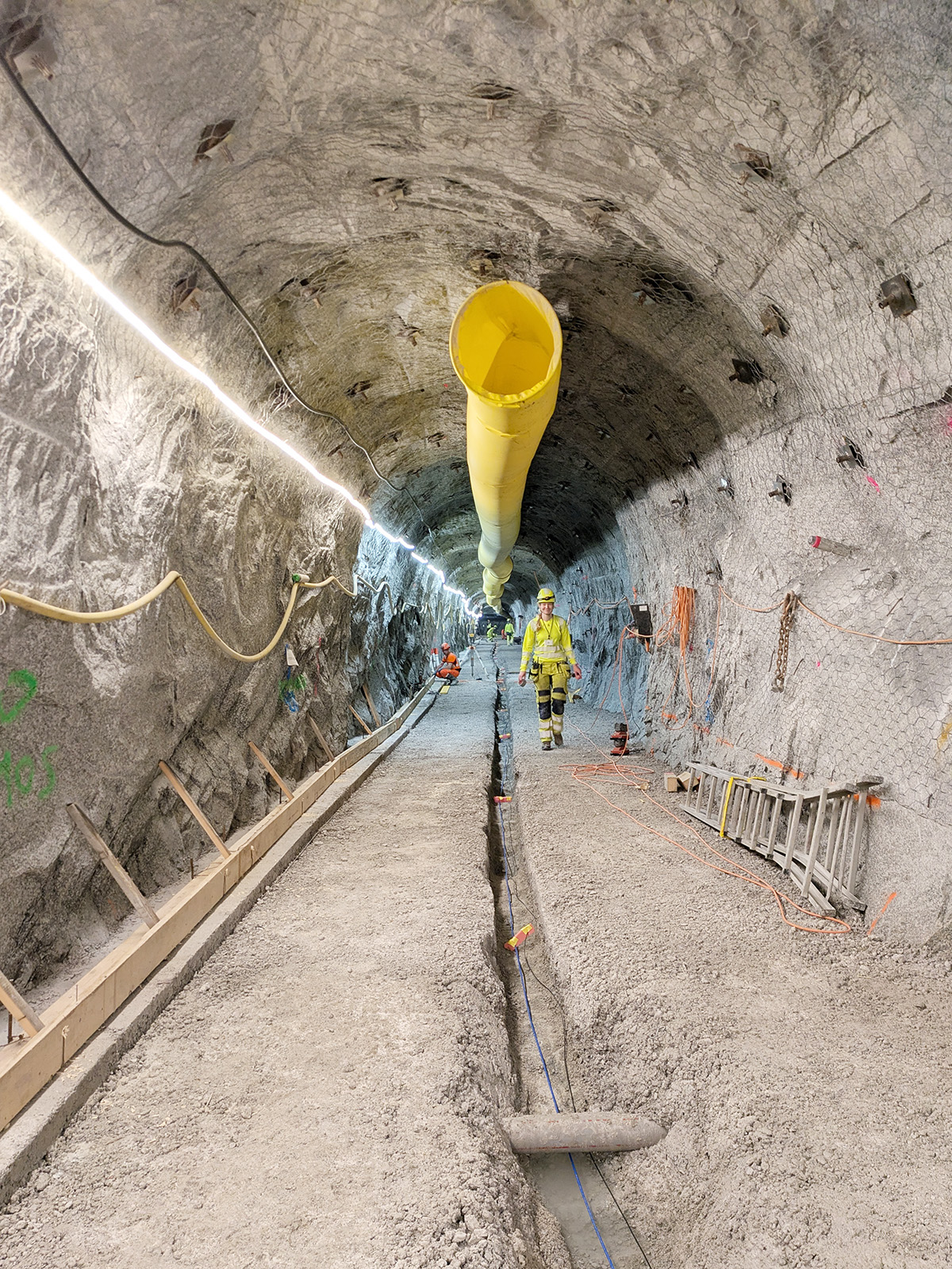2025-05-22
When tunnel construction drives research

In September 2023, construction work began on a new side tunnel as part of the FEAR project. This tunnel runs parallel to a natural fault zone, which will be examined at close range to better understand how earthquakes evolve and stop. The excavation work also supported another research project—PRECODE—focusing on the behavior of crystalline rocks as a geological barrier for the disposal of nuclear waste. The goal of this project is to investigate how the surrounding rock responds to excavation activities, particularly in terms of stability, and how the Excavation Damage Zone (EDZ)—meaning the tunnel walls and surrounding rock volume directly affected by the excavation—evolves over time. The EDZ is a crucial factor in the search for a suitable nuclear waste repository.
To investigate PRECODE’s research questions, the rock volume to be excavated was extensively instrumented beforehand using various monitoring techniques, including seismic, hydraulic, deformation, and geophysical methods. One important research question is the impact of excavation methods on the EDZ, including a comparison of two techniques. The objective is to observe the evolution of the EDZ over a period of three to five years.
The first ten meters of the new tunnel were excavated using controlled blasting, while the remaining eleven meters were excavated using a technique known as “Line Drilling and Rock Breaking,” internally referred to as “Soft Excavation.” This method involved drilling numerous small holes around the tunnel perimeter to serve as anchoring points for a rock splitter, which was then used to break up the interior material. The objective of the Soft Excavation was to minimize excavation-induced damage, allowing the project to assess damage development driven purely by stress redistribution, in contrast to construction-induced damage caused by drill and blast.
Initial results clearly demonstrate the development of the EDZ around the tunnel in response to excavation. Identifying the characteristics of this short-term EDZ—particularly its location and extent—paved the way for the PRECODE research team to focus on the area of interest for long-term monitoring, where they will study how the damage evolves over time due to changing environmental conditions.
After this test section, excavation continued for another approximately 80 meters using the faster drill-and-blast method. As of the end of April, excavation of the side tunnel has been completed. Final tasks are now underway, including paving the tunnel floor with concrete and installing a metal mesh on the ceiling to ensure a safe working environment. This month, the drilling of the first boreholes from the new side tunnel is planned to continue the research efforts.
The PRECODE project is led by a research team at RWTH Aachen. Project partners are ETH Zurich, York University (Canada), Dalhousie University (Canada), and BGE Technology GmbH (Germany).

